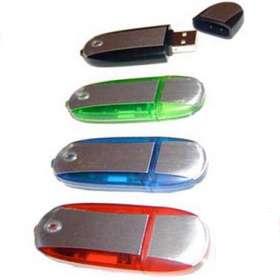Experts are warning that hackers have yet to activate the payload of the Conficker virus.
The worm is spreading through low security networks, memory sticks, and PCs without the latest security updates.

The worm can also spread via USB flash drives
Method
According to Microsoft, the worm works by searching for a Windows executable file called “services.exe” and then becomes part of that code.
It then copies itself into the Windows system folder as a random file of a type known as a “dll”. It gives itself a 5-8 character name, such as piftoc.dll, and then modifies the Registry, which lists key Windows settings, to run the infected dll file as a service.
Once the worm is up and running, it creates an HTTP server, resets a machine’s System Restore point (making it far harder to recover the infected system) and then downloads files from the hacker’s web site.
The worm disables system restore, blocks access to security websites, and downloads additional malware to infected machines.
Most malware uses one of a handful of sites to download files from, making them fairly easy to locate, target, and shut down.
But Conficker does things differently.
Anti-virus firm F-Secure says that the worm uses a complicated algorithm to generate hundreds of different domain names every day, such as mphtfrxs.net, imctaef.cc, and hcweu.org. Only one of these will actually be the site used to download the hackers’ files. On the face of it, tracing this one site is almost impossible.
Kaspersky Lab’s security analyst Eddy Willems said that a new strain of the worm was complicating matters.
“There was a new variant released less than two weeks ago and that’s the one causing most of the problems,” said Mr Willems
“The replication methods are quite good. It’s using multiple mechanisms, including USB sticks, so if someone got an infection from one company and then takes his USB stick to another firm, it could infect that network too. It also downloads lots of content and creating new variants though this mechanism.
“Of course, the real problem is that people haven’t patched their software,” he added.
Microsoft says that the malware has infected computers in many different parts of the world, with machines in China, Brazil, Russia, and India having the highest number of victims.
The Downadup worm that exploits a months-old Windows bug/vulnerability has infected more than a million PCs in the past 24 hours, a security company said today. Aliases of the worm are Worm.Conficker [PCTools], W32.Downadup [Symantec], Net-Worm.Win32.Kido.ih [Kaspersky Lab], W32/Conficker.worm [McAfee], W32/Confick-A [Sophos], Worm:Win32/Conficker.A [Microsoft], Worm.Win32.Conficker [Ikarus]
Keep your Windows and Antivirus definition updated.
If you’re a victim of this worm, you could visit F-Secure’s Malware Information page for more information for its removal from your computer system.
Source : BBC News
Possibly Related Posts:


